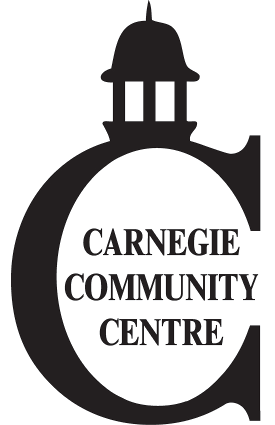History
History
Carnegie Library was Vancouver's first Public Library, built in 1902-03 with a $50,000 donation from the steel magnate and union-bashing capitalist Andrew Carnegie. It continued in this function until the 1950's, when the Library relocated to its next quarters on Burrard Street. The Carnegie building was converted into a museum, with the still famous Mummie ensconced in a display case on the 3rd floor. In the late 60's the museum use finished and the collection was dispersed, leaving the building empty. It was boarded up and remained empty.
Beginning in 1974, members of the Downtown Eastside Residents' Association (DERA) began, in response to much input from local people, to work toward turning the old library into a community centre. Over the next 5-6 years, the City Fathers had narrowed possible uses/disposal of the site to one of the following: 1) a parking lot; 2) a policemen's athletic club; 3) a restaurant/nightclub; 4) a place for some rich guy to show off his rock collection (after buying it for a buck).
DERA staffers Bruce Eriksen, Jean Swanson and Libby Davies (currently Member of Parliament for Vancouver East) somehow arranged or got Council to agree to hold a meeting in the old building, in the middle of the dust, dirt and ratshit. They made their case to spark a vision of the potential of the old girl, and one Councillor changed his mind - and the spark became a flame.
The Carnegie Community Centre opened its doors on January 20, 1980 and, from the first day, incorporated volunteers into the day-to-day running and provision of services, programs, and food production.
Other
The first Newsletter came out in 1982. It was a single legal-sized sheet with a short calendar of upcoming events and a story about one of the music programs. By 1983 there was enough interest developing and people eager to talk about things and issues, write poetry and do artwork for a community centre newsletter on a regular schedule. The Carnegie Crescent was born. It came out later and later as time went on, with virtually everyone being an editor and no one happy with the final product. Rumour had it that one person, who had it last and took the final draft to the print shop, would take others' submissions out just before to put personal stuff in instead. This infuriated a few and bored most readers. The Crescent finally imploded.
In 1986, staff person Cindy Carson utilised an Unemployment Insurance Top-Up program to get funds to hire Al Mettrick, who'd just arrived from Toronto after working at the Toronto Star, to start a newsletter. He walked around for a few weeks saying, "Hi, I'm Al and I'd like you to help me make a paper." The first edition of the Carnegie Newsletter came out on August 15, 1986, 12 pages in 60 copies made on an old photocopier upstairs. It came out on the 1st and 15th of each month and after 2-3 issues, people began to write poetry, submit art and stories, and it seemed to be the beginning of something good. Al's UI ran out in November, he went on with his life, and a few people realised it wasn't that difficult to make a paper - to make it our own.
Others
Typewritten stories, poetry, (copy) was cut with scissors and pasted with glue and laid out with internal stuff to begin with. It soon expanded to include neighbourhood and global issues, and the look/feel of the paper was ironic and mostly spot on. Everything except the actual printing was (and still is) done entirely by volunteers. It gets printed at Budget Printing and was hauled the 2-3 blocks early in the morning of the 1st & 15th in bags, backpack, and sometimes just dragged. One fine day the dragger thought "I should have a little red wagon!" and then came upon an abandoned shopping cart (of which there are usually 1-6 within a few blocks of Carnegie on any given day). Like a revelation, like a Vision, it came to him in a flash!! 'Use the shopping cart." It became 'office equipment' as calmly explained to the regular visitors and dilettantes wondering why it was inside a building that was not a supermarket.





